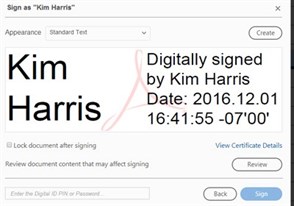Optimize Your Translation QA Checklists
Quality assurance (QA) is a best practice that spans across all industries and sectors. It is a way to ensure that all steps of a process are executed correctly, ensuring deliverables are accurate.
For localization projects, simply proofreading the translated text is not enough. It is important to check that the tone, vocabulary, tense, naming conventions, grammar, etc. of the translated content matches the source language version.
I previously wrote about the importance of QA for translation projects, and for this blog, I will instruct you on how to optimize those checklists.

Create Department-Specific Checklists
One giant checklist for all departments is not efficient. Companies have many departments doing very different tasks and they should only focus on checklists that apply to them. If people have to scan past bullet points that don’t apply to them, it is time-consuming and inefficient.
For example, localization project management teams should have a checklist outlining things like: glossary creation activities and how to review client changes and sign-offs, etc. While desktop publishing teams should have lists addressing things like: directions for correct images and placement, pagination, color structure, page size, etc. It would be complicated and messy to try and combine checklists for these departments.
Format and File Checklists
All checklist headers should include the project number, date, which departments are involved and should have easy check boxes formatted for online use. Many checklists are filed on the hard drive or FTP (file transfer protocol) so there is no need for printer-friendly versions. The checklist should be filed away with the project in its respective folder so the checklist is available upon request with the project.
Digital Signatures
All checklists should have an individual digital signature that you can create in Adobe Acrobat. Use a password for this so it is your unique ID. This ensures that all stakeholders have looked it over and if there is ever an issue with a file the person who signs it can give some insight. Also, having your name attached to a checklist guarantees good quality assurance. No one wants to put their name on something that is not to the best of their abilities.
Translation Checklists

For localization projects, there are many factors that need to be addressed for projects. These tasks should be segmented by the phases of the translation process. For example: pre-project items, translation phase and editing/proofreading phase. Some of the items to include in translation checklists are:
-
Read source documents for initial understanding and questions for subject matter.
-
Reviewed source documents for cultural correctness issues.
-
Completed glossary creation activities.
-
Checked technical or industry specific terms for accuracy.
-
Reviewed special client requests, completed guides and reference material and committed to turnaround times or client specified deadlines.
-
If the translation has expanded/contracted in comparison to the source text, has the content been formatted so that the document is ready for presentation?
-
Is the file type correct? Can it be opened by applications that can read that file type?
-
Does the file reside in the correct place or does it need to be moved to a different server and different directory so it can be accessed together with the other files that are part of the project?
-
Does the target text express the same concept as in the source text?
Summary
As you can see, checklists for quality assurance are very important and clients will ask if this is a best practice of your company. Checklists show that every department has followed the order of operations from start to finish and double checked that all the t’s were crossed and i’s were dotted. If a company follows a QA checklist system the flow of the project will be more streamlined and the end-product will be delivered flawlessly.
